The inner harbour of Maassluis, with the historic boat Furie and the ship Hudson.
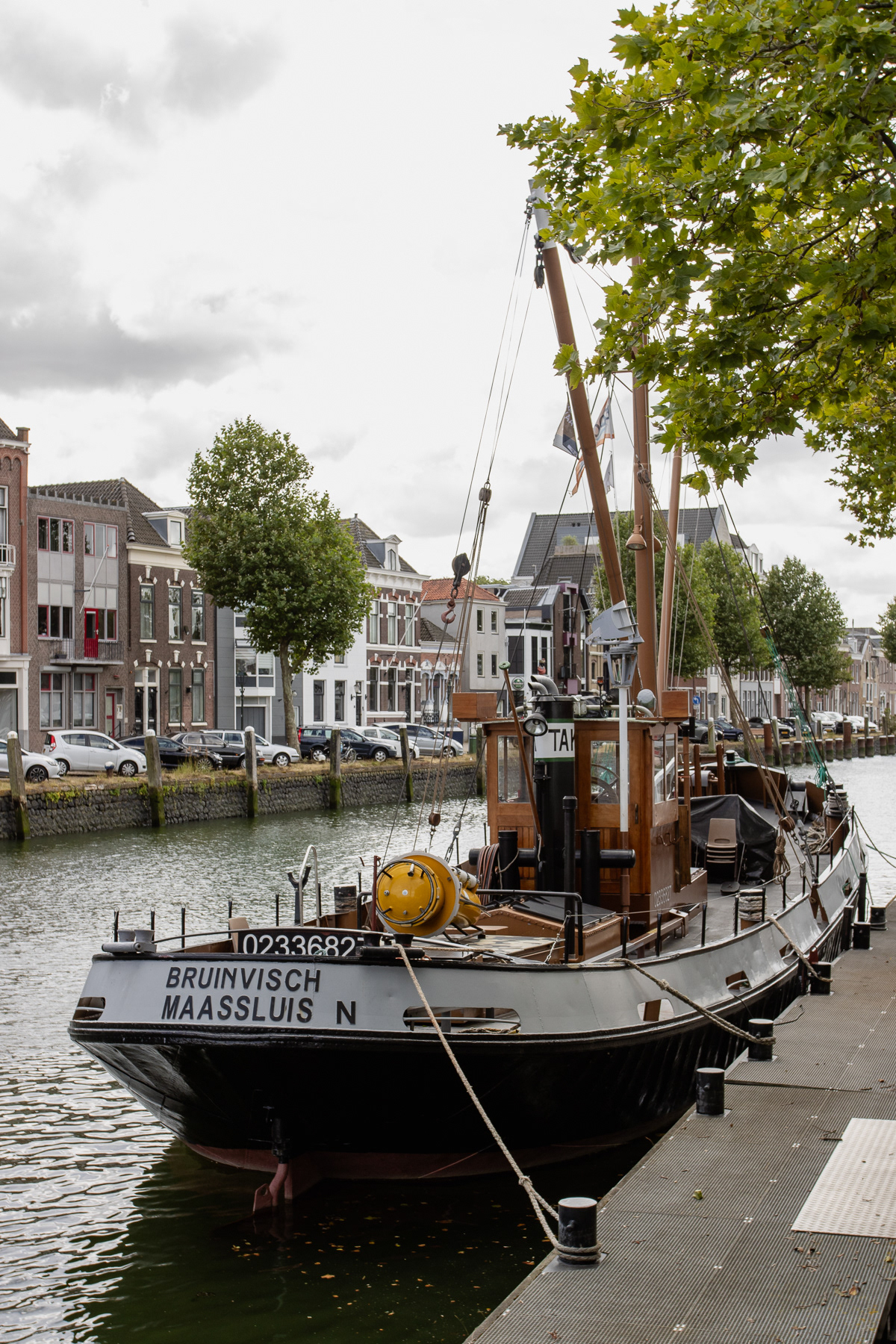
Historic salvage boat Bruinvisch
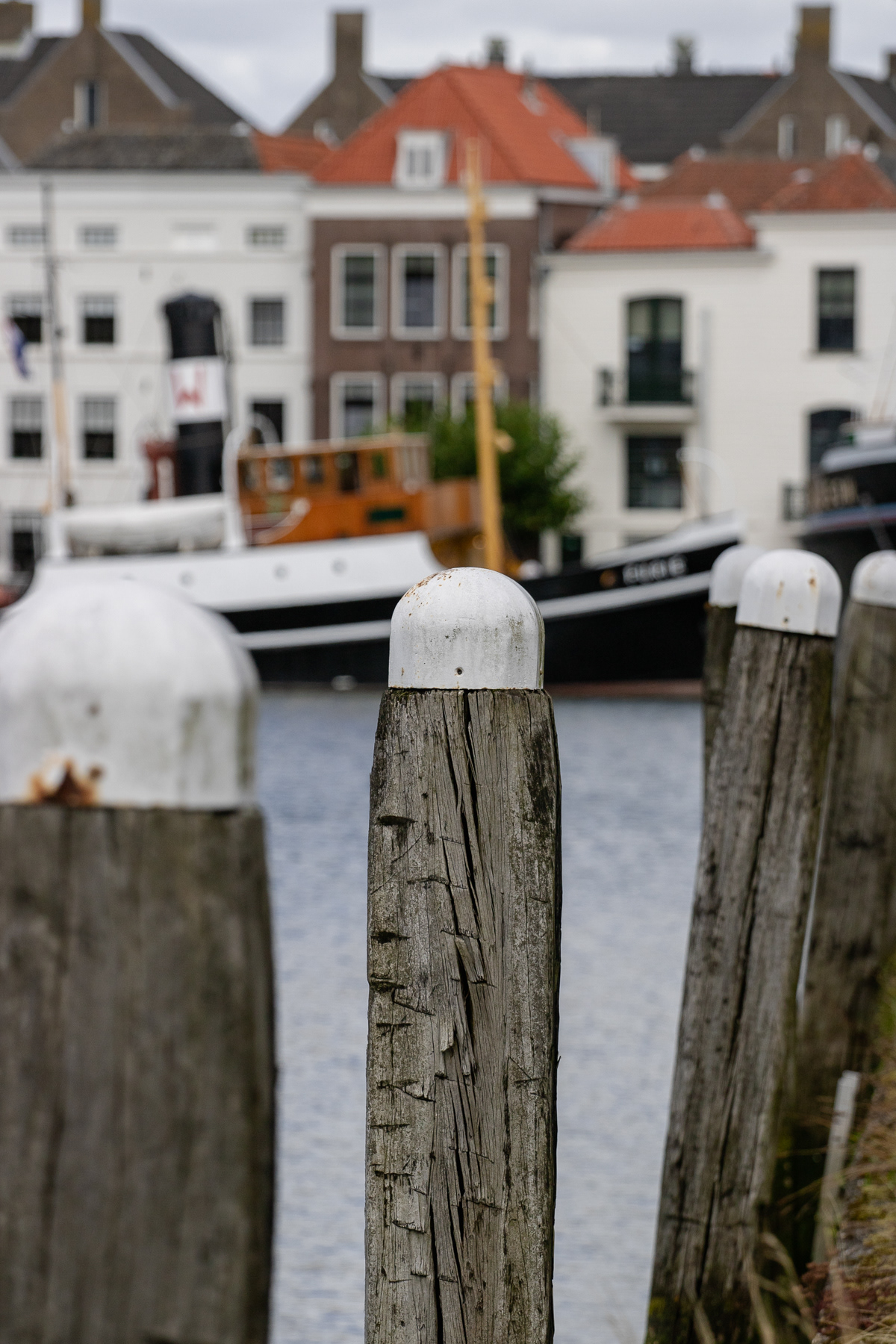
Whit tipped moaring posts.
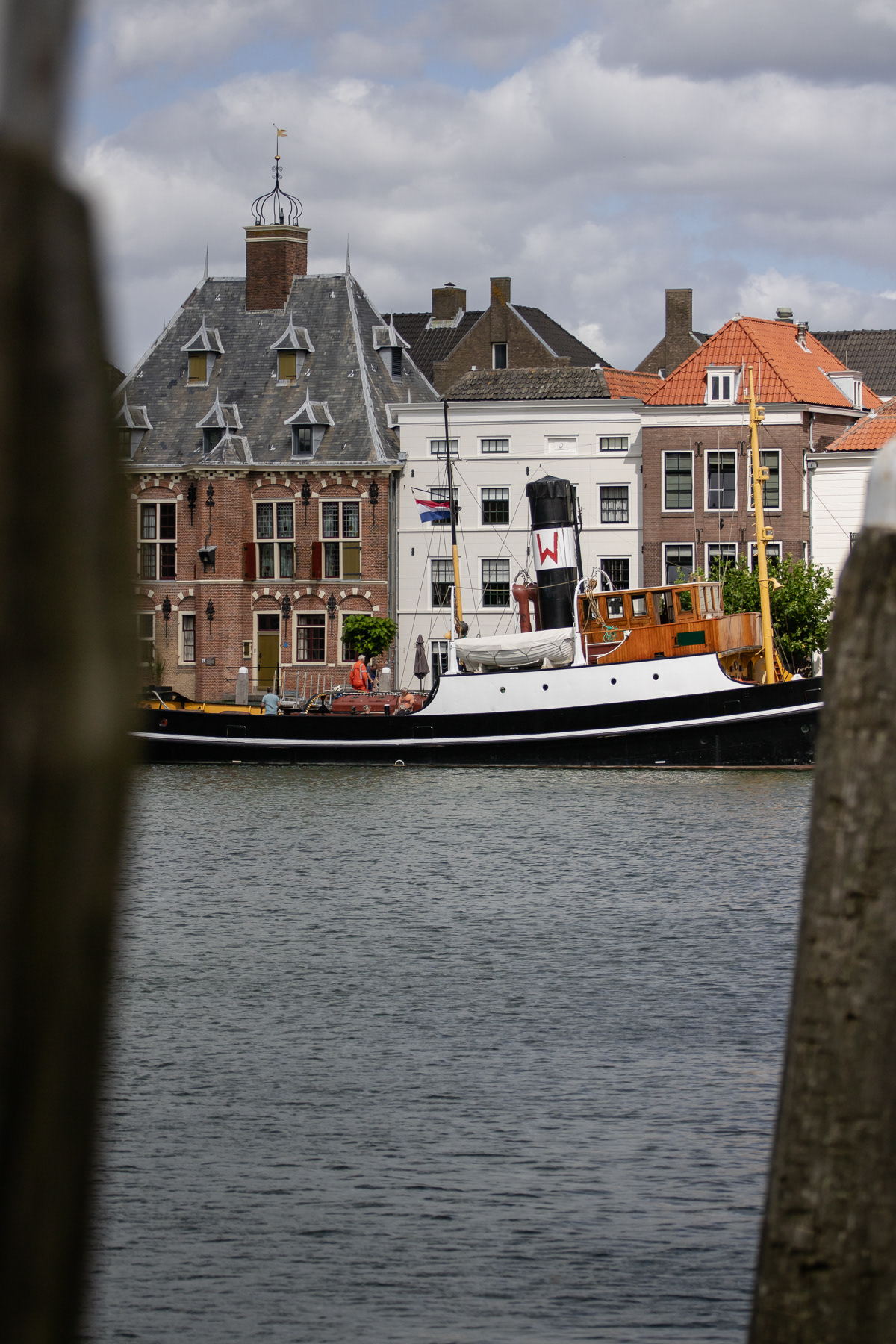
Historic salvage tow boat Tonijn and last steam-powered seagoing Dutch tugboat Fure. The Hudson is the last surviving pre-World War 2 tugboat in the Netherlands. It was used by the Allies during and took part in the invasions of North Africa and Normandy.
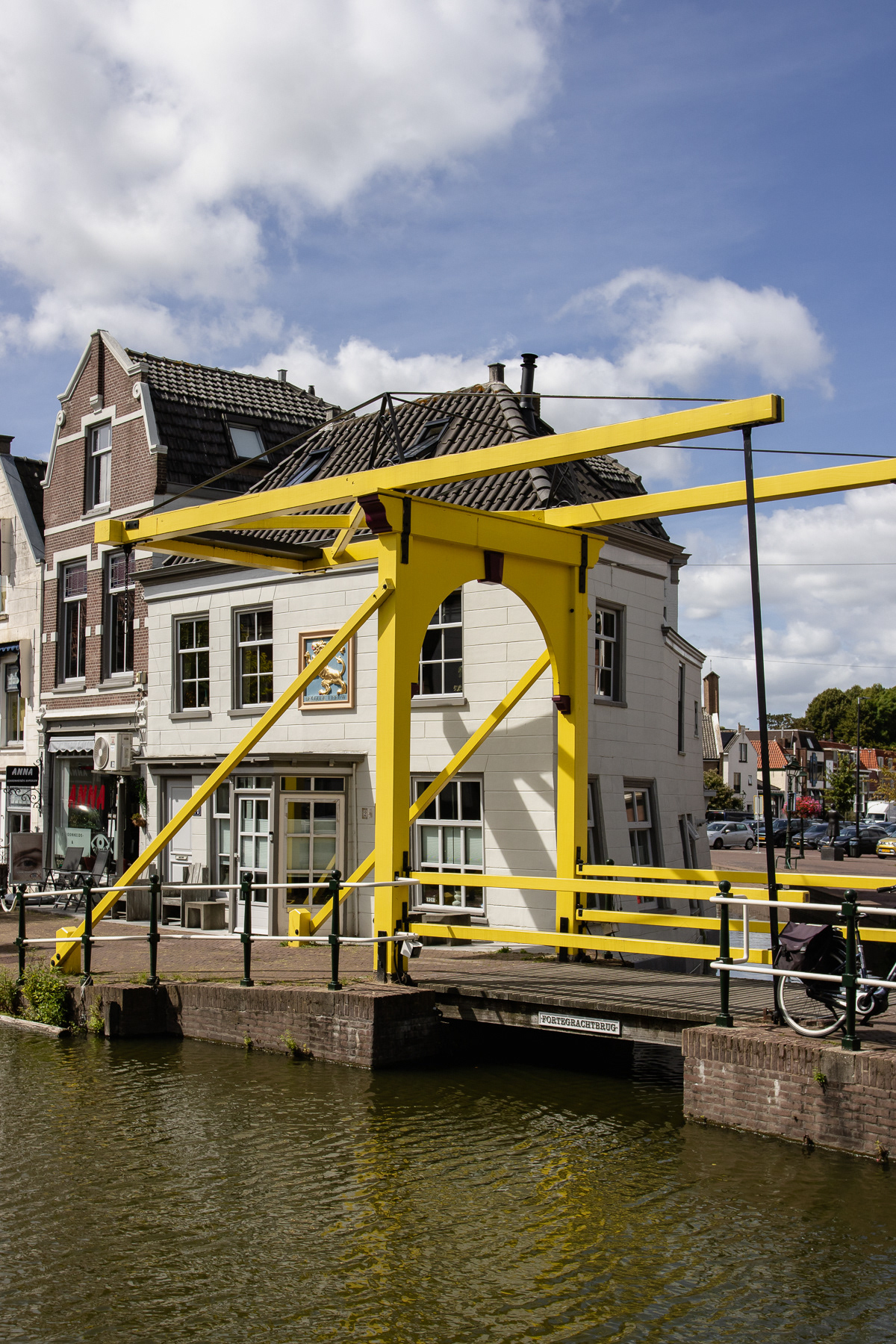
Yellow draw bridge in the centre of Maassluis.
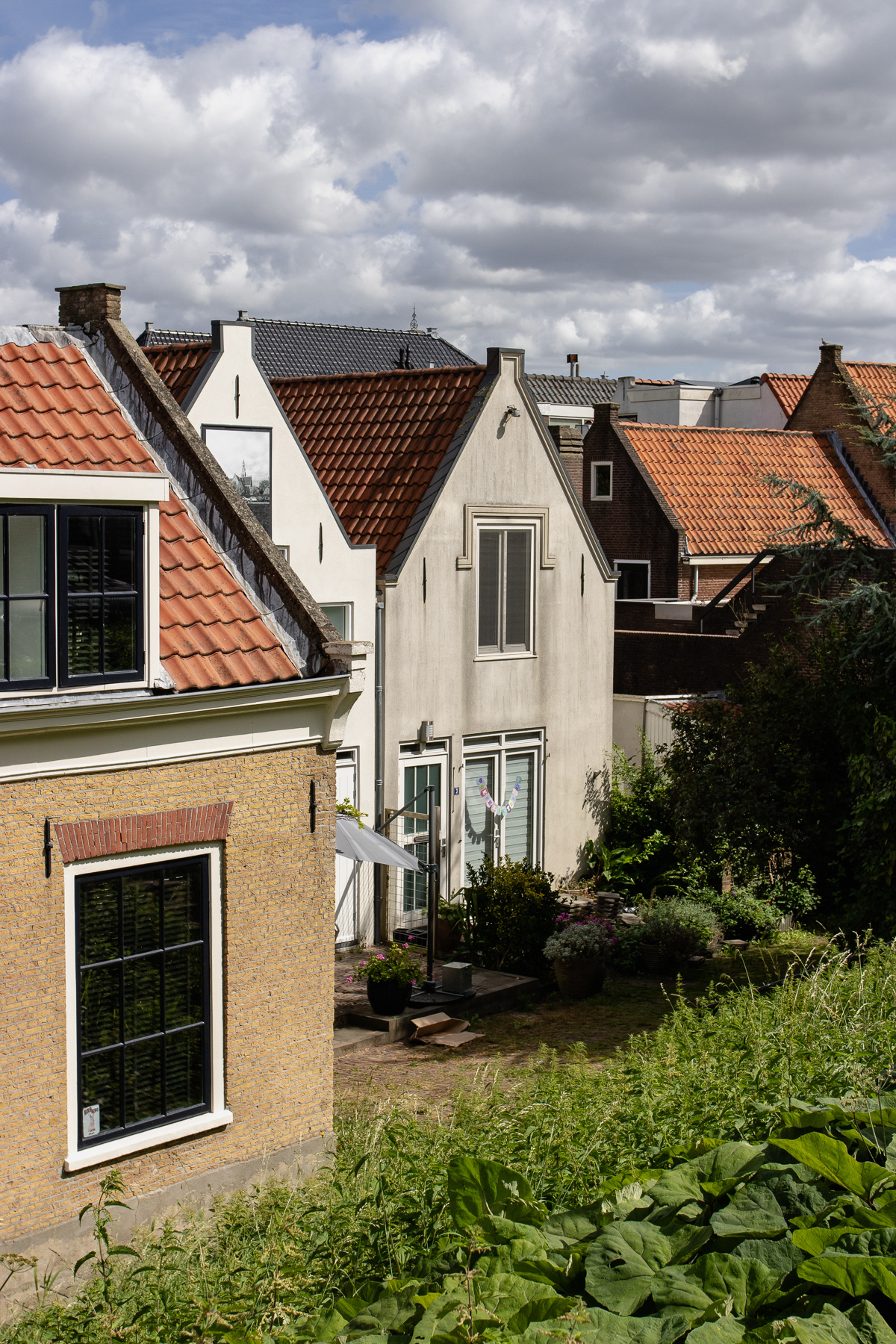
Homes down of a dyke meant to defend the land with high water.
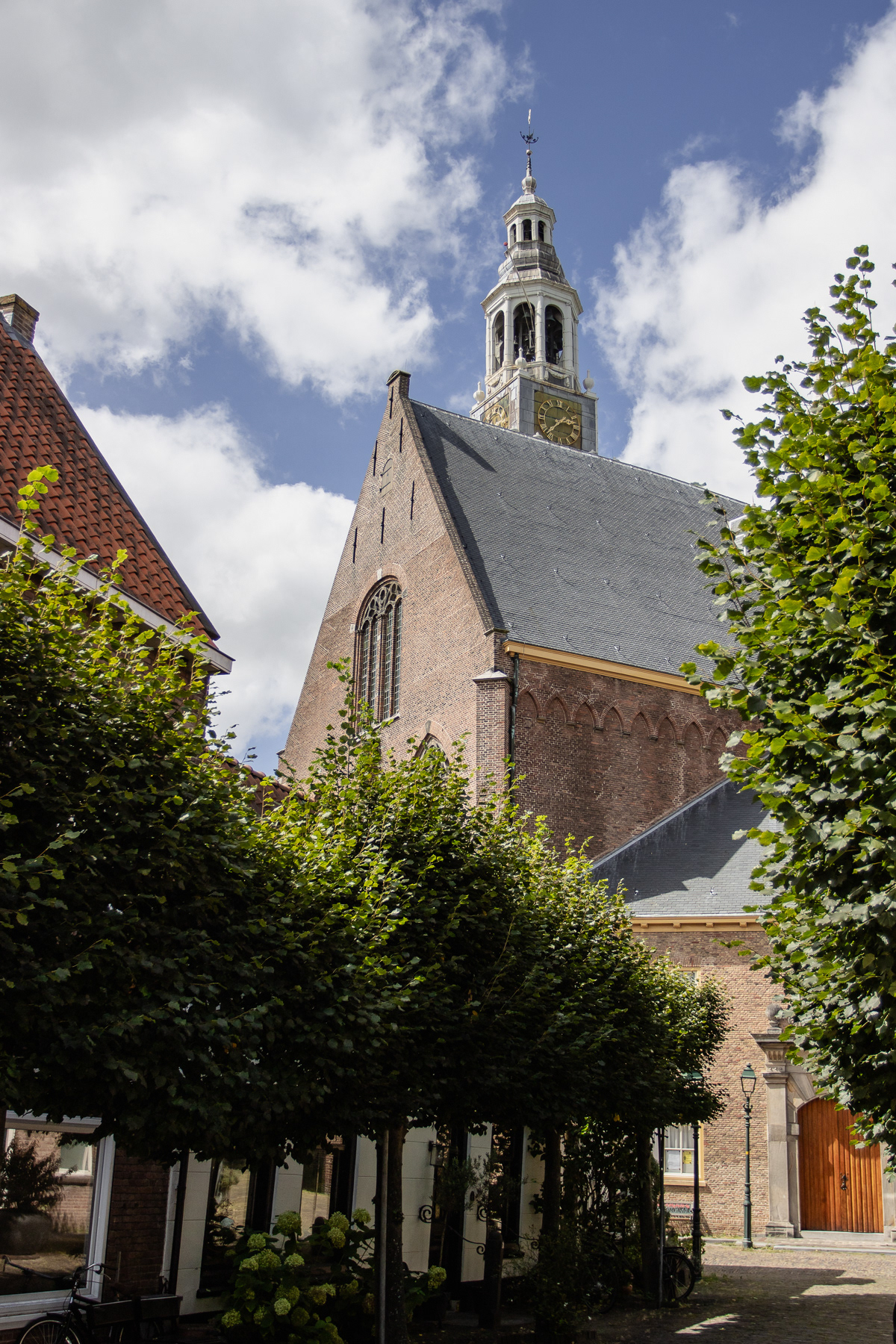
The Groote Kerk (The Big Church).
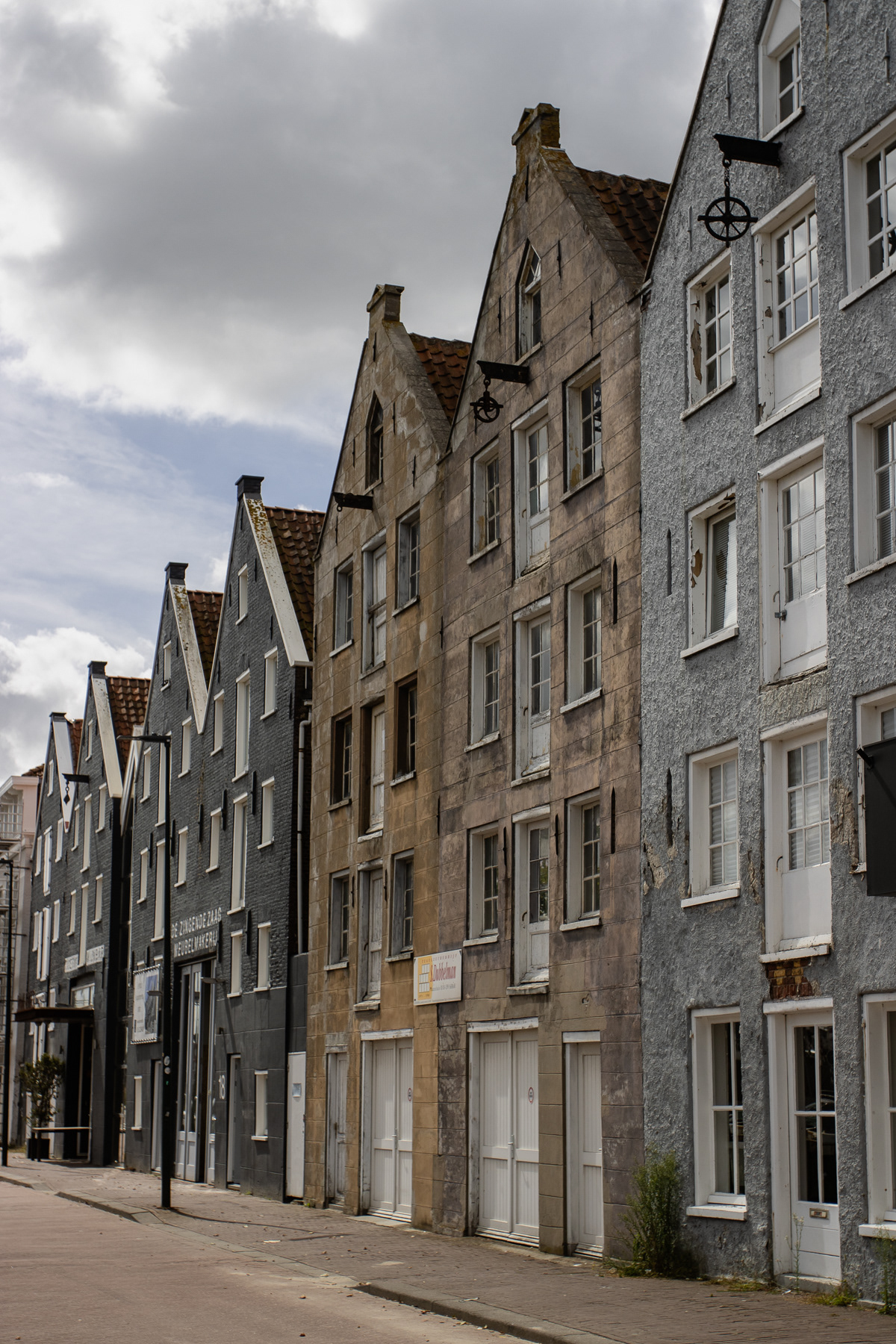
Former warehouses on the inner harbour quay.
The Marnixkade bridge in depth of field with ship robes. Only photo of these series taken in 2004.
Historic buildings in the inner harbour, like most other photos in this series taken in summer 2024.